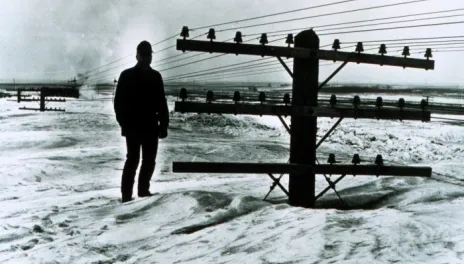The Blizzard of April 2022
As we pick up the pieces following North Dakota’s most recent blizzard, just how does this storm compare to others across the northern plains that have made the record books? (Note: this article was written during the midst of this 2022 storm so comparisons are yet to be made). With no modern technology to forecast the weather, people had no advance warning of threatening weather events.
The Schoolhouse Blizzard of 1888 “came out of nowhere” during the middle of a warm January day. School children became trapped at country schools and an estimated 112 people perished due to rapidly dropping temperatures and whiteout conditions. Teddy Roosevelt’s life as a western Dakota rancher ended due to devastating blizzards during the 1880’s that cost him the majority of his cattle herd and forced him back to New York year-round.
A 4-day blizzard in mid-March of 1920 added 8 inches to an existing ground layer of snow. The resulting drifts covered houses and buildings, trapping people and shutting down the state. Most phone lines were down and rail service was brought to a halt. The storm resulted in 34 deaths, making this storm a deadly one. Children of the Miner family were caught in the blizzard after their horse and sleigh tipped in snow coming home from school. Sixteen-year-old Hazel saved the lives of her younger brother and sister by covering them with blankets and laying down on top of the blankets to keep the children warm. Hazel did not survive the ordeal, but the story of Hazel Miner is memorialized with a statue in front of the Oliver County courthouse.
March 15, 1941, started as a mild day with temperatures above freezing. As darkness set in, an Alberta Clipper swept through with wind speeds of up to 85 mph. The storm lasted only seven hours but brought with it a massive drop in temperature and heavy snowfall. It resulted in the deaths of 39 people trying to find their way home or abandoning stuck cars. On the Robert Grindler farm near Rogers, two turkeys emerged from a snow bank after being buried in the snow for 23 days. Near Valley City, a live sheep was uncovered at the Fred Schroeder farm 17 days after the storm. One of the most tragic stories of this storm is of the Warren Taylor family who farmed four miles from Dazey. The four Taylor sons had gone into town to go roller skating. On the way home, their car stalled and the boys left the car to walk home. Only one of the four boys survived, found by neighbors the next morning.
The famous 1966 blizzard began on March 2 and raged for three days. The storm featured wind gusts up to 100 mph and 30 inches of snowfall with drifts that reached 30 feet. At one point, 500 passengers of a train were trapped near New Salem, since the rails were completely snowed over. Almost 140,000 head of livestock were lost, either trapped out in pasture or from taking shelter in barns that collapsed due to snow load. Five North Dakotans perished, including two young girls who had gone out to the barn to tend to the family’s animals. The girls got lost and wandered into the white abyss, where they died from exposure.
A massive winter storm on February 4, 1984 blew into eastern North Dakota quickly, dropping temperatures to -16 degrees. In one 50-mile stretch there were 800 motorists stranded along Interstate 90. The National Guard worked to rescue people, but were unable to save 23 people who died. Four of those deaths happened on 19th Avenue North in Fargo where a car became stranded in a snow-clogged underpass. Running the car to keep warm, passengers succumbed to carbon monoxide poisoning as the car’s exhaust became blocked by snow. Safety protocols were changed after this storm, with the installation of snow screens to reduce the amount of snow reaching some roadways and installation of snow gates to close vulnerable roads.
Many of us remember the April 4-7, 1997 blizzard, twenty-five years ago. It blew in on a strong Colorado low, just like the 2022 storm. Total damages from the 1997 storm were estimated at $44.7 million, with two fatalities and 16 injuries; an estimated 100,000 cattle (10 percent of the state’s herd) were lost; power poles fell and 75,000 homes were without power for some time. Cities reported 16 to 24 inches of snow, which led to catastrophic flooding of the Red River in the weeks that followed.
The blizzard of April 2022 will likely enter the record books. What stories will you have to tell?
Gerri Makay
Gerri.Makay@ndsu.edu
ND Forest Service Community Forestry Manager

